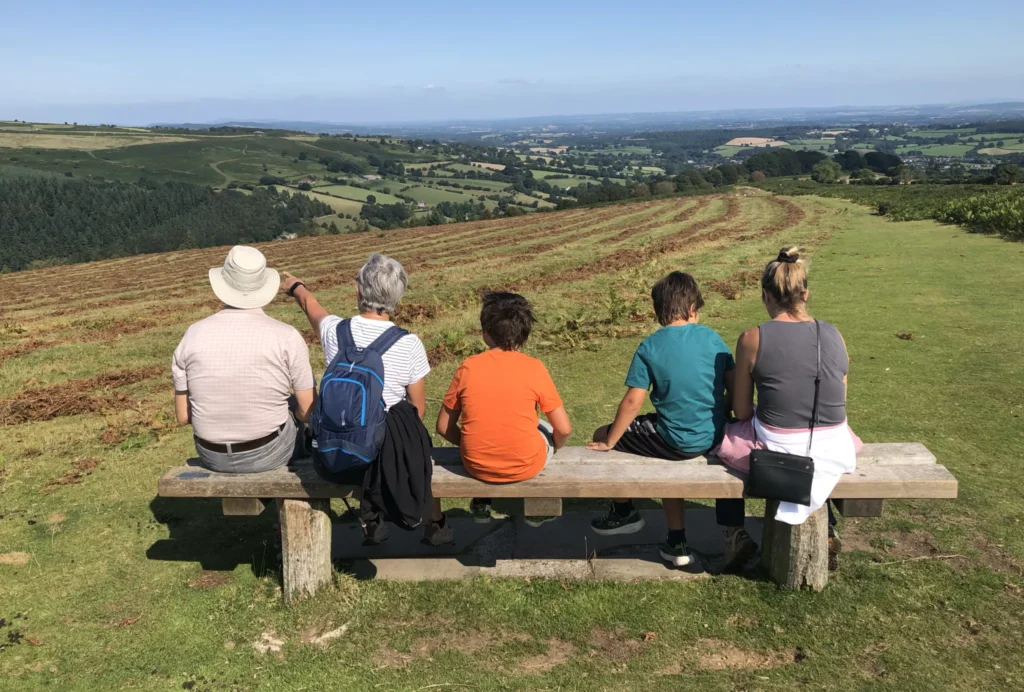8 Ways to Record Family Stories for Prosperity
Recording family stories is the best way to pass on your family’s spirit and experiences, yet it’s often overlooked.
In 2019, prompted by unexpected health problems facing both my parents, it dawned on me that so much of our family’s history and knowledge rests with them. Stories about their lives, their parent’s lives, extended family’s and my own childhood years. Without them, so many stories that strengthen our family identity and connect us to the past would be lost. Their illnesses were my wake-up call to record our family’s stories. And to do it right away, as life can change unexpectedly at any time.
In this article, I’m sharing the best solutions I found on how to record family stories.

Jump to section:
- 1. Record Family Stories in Books
- 2. Track Events in a Diary
- 3. Video and Voice to Preserve the Moment
- 4. Shared Documents
- 5. Memory Recorders
- 6. Story Recorders
- 7. Genealogy Sites
- 8. Our Family’s Solution – Simirity App
- Summary Of Ways to Record Family Stories
1. Record Family Stories in Books
A book is timeless and can be physically passed down between generations.
You might write it by hand, or create a scrapbook that includes photos and interesting paperwork such as postcards. You can also create beautiful books digitally and have them printed using services like Apple, Weeva and Shutterfly. For inspiration on what to write, try Storyworth, where a question is sent each week for a year to a family member, and their answers are bound in a book.
We love books, but they have limitations too.
Once printed, you can’t update them with extras. And without video, sound, maps or new materials, they are less vibrant and engaging than digital records.
It’s always quite a moment to receive books, but they quickly get tucked away from view and aren’t opened as often as they should be. When you do get around to opening it, finding what you’re looking for can take time as you can’t search for keywords. And then there’s the physical constraint – books are only helpful to people who are physically next to them.
2. Track Events in a Diary
With digital diaries like Penzu it’s easy to go back in time and record family stories. You can even add photos, videos, audio and set locations. Because this is digital, it’s always with you and can evolve (unlike books) over time.
However, being a ‘diary’ is something for one person. You can’t collaborate with others, and there is no sharing. That’s not a problem though, if recording your family history is a solo project.
Also, with it being a diary, you’re not able to build profiles about different people within your family. The focus is on the dates, not people or their experiences. It’s less about creating an heirloom of stories that others can enjoy and more about the experience of writing stories.
3. Video and Voice to Preserve the Moment
I asked friends what they used to record their family’s stories. One answer I heard multiple times was to record interviews with family members using video or audio. This is a great idea and those digital files that capture stories in the form of conversations are extremely precious. Here are some tips for interviewing family.
There are even services that can help you record audio stories, such as StoryCorps.
However, some challenges still need to be addressed to get the most from this medium:
- How do you make the most of these video and voice recordings?
- How can these files become a part of your daily life and not get forgotten about?
- How do you combine these files with relevant photos and written stories?
- How easy is it to find a specific recording when you want to?
Depending on your needs, video and voice recordings might not be a complete solution.
4. Shared Documents
Solutions like Google Documents and Google Photos allow you and your family to co-author digital documents, share photos and upload videos to shared folders.
All aspects of your family history can be recorded, and for free if you do not exceed your storage limit. You can even enjoy daily photo anniversary notifications to connect your family’s past with your day-to-day.
These services offer a cost-effective and flexible way to save all aspects of your family history to the cloud. They offer a ‘blank page’ where you can create whatever you like and edit it endlessly as new details emerge. But it’s up to you and your family to work at it. There are no story prompts to inspire you to write great stories. Google is not custom-designed for recording and accessing family history. It’s an incredibly versatile tool for all kinds of projects, far beyond the needs of family stories.
Also, be aware that “If you’re not paying for the product, then you are the product”, meaning that companies might use your personal data to make money.
5. Memory Recorders
Some apps act as your ‘digital brain’.
The well-known Evernote is on a mission to help you remember everything, in work and personal life. It’s amazing. You can co-create digital scrapbooks on all aspects of your family history. It’s a very powerful organisational tool with lots of features, including many that are not relevant to your family’s history.
Apps, including Memories and Memorykpr offer ways to capture memories with text, audio, photos and videos. With a focus on media files over text-based memories. You can return to your calendar to attach your family’s history to relevant dates. The result is a timeline showing media files of events, with text as an accompaniment.
These are flexible tools that truly capture memories, but their versatility means they are not honed in on their use for families. And it’s not always clear how you can pass on your digital brain to your children or your children’s children.
6. Story Recorders
Some services focus on stories with media files to support the narrative. You can tell your family history in stories at Lifestories and Storychest. Or using Hereafter you can build stories with the assistance of an intelligent robot.
7. Genealogy Sites
Sites like Ancestry, Familysearch and Myheritage offer a way to search for ancestors in official documents and add information to their biographies. This is a great way to share details of family members with other users of those services.
However, these services are not filled with a comprehensive set of stories and media files that share key moments from their lives. The character and experiences from life are not as rich as you would be able to record in other services.
8. Our Family’s Solution – Simirity App
For our family, all the options discussed above missed something.

As mentioned at the start, we were motivated to record precious memories about loved ones’ lives due to serious family illnesses.
We felt the clock was ticking to get these stories recorded. However, preserving stories was just a part of it; spending quality time with family talking about things that matter was just as important.
Time is precious, and we wanted to make the most of it.
We couldn’t get excited about things like making a printed storybook or creating a shared document online. It felt too much like work, and we risked focusing our attention on our ageing parents rather than on the family as a whole. My parents were happy to share their stories, but they wanted to do so gradually over time while hearing all about their family’s lives in their stories.
In short, they didn’t want a fuss to be made over them – they preferred to be a part of something bigger.
Our five requirements
Requirement 1 – A meaningful experience that involves all family
Family stories can’t be recorded by one person alone—it’s a family project.
This meant we needed individual access for all family members, co-authoring options, and an uncomplicated service that everyone could understand. We wanted something streamlined for stories about our family and accessible to everyone from all devices, everywhere.
We hoped that the experience could be just as valuable as the outcome.
Requirement 2 – Story prompts inspiring great stories
We wanted some inspiration to help us record family stories in the best way possible. A list of questions so we could discover the best story ideas would be a huge help. Being given an empty document to fill or a folder to add content to, felt too much like work.
Requirement 3 – Stories blended with media files, maps and more
We wanted media-rich stories to capture our family history, blending text with photos, videos, and voice recordings. Ideally with options to tag people, stories and locations.
There should be enough supporting features to make a diverse set of stories, not just upload photos and add a sentence or two. We should be able to type long stories up on a computer if needed, not waste time on a phone app. Maybe there’s a YouTube video or Spotify playlist we want to embed to create a diverse story – why can’t we add those too?
Requirement 4 – Private and advert free
One crucial requirement was to keep our stories private, so people outside the family (including the service provider) could not access them unless we so wished. And diluting our stories with the endless adverts you see on most sites these days, sounded horrible.
Requirement 5 – Remind us about our family’s past
Precious family stories should add a sparkle to daily life!
We wanted to interact with our family’s stories regularly. Enjoying reminders of past events and learning about what’s happening now in our family’s lives. Having great stories tucked away in a book or on a hard drive is like having a diamond necklace that never gets worn.
Our solution – Simirity App
We built the Simirity app to address our family’s requirements, as listed above. Depending on your family’s requirements, Simirity might be good for you too.
Simirity App is a private storytelling app that unites your extended family in stories, even if you live apart.
Over time, your entire family can build an archive of digital stories, connecting family members in real-time and creating a story legacy that welcomes future family.
If you would like to learn more about the Simirity app, visit our home page.
Summary Of Ways to Record Family Stories
This post is about different ways to record family stories, but ultimately, the stories are not the real goal.
Why do you want to record your family’s stories?
- To uncover your family roots?
- To preserve these stories for future generations?
- To record your children’s lives as they grow up?
- To connect and better understand your family in a joint venture?
- To inspire more interesting and diverse family discussions as you explore topics rarely spoken about?
- To save your old photos and videos in some meaningful way, so future family can make sense of them?
- To record new memories from the present day, not just those from the past?
Take a moment to consider what you hope to gain by recording your family stories. Then test out the suitable services listed above to find the best for your needs. Many services have free options to get started with. They might be a perfect match.
If your family’s needs are similar to mine, Simirity might be of interest to you. Explore our website to learn more and check out these prompts for stories that your family will treasure.
Ultimately, what’s important is that you record family stories without delay! Your family’s stories are too important to lose.
